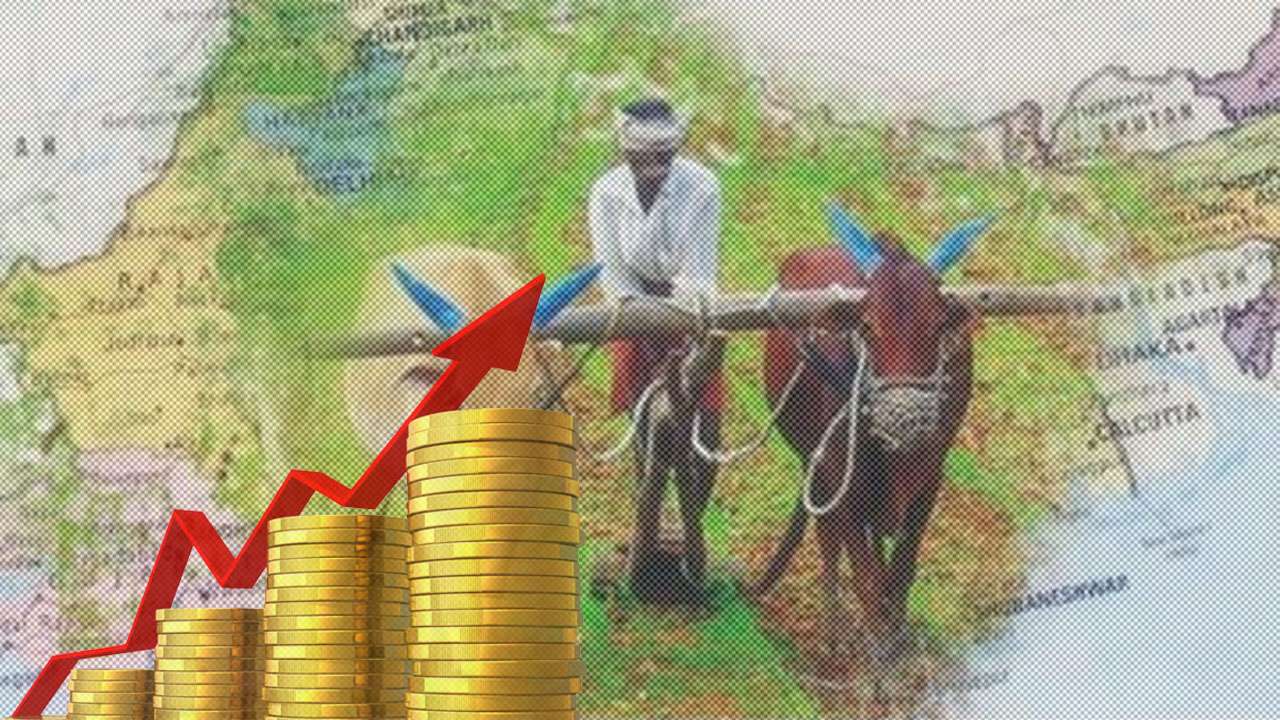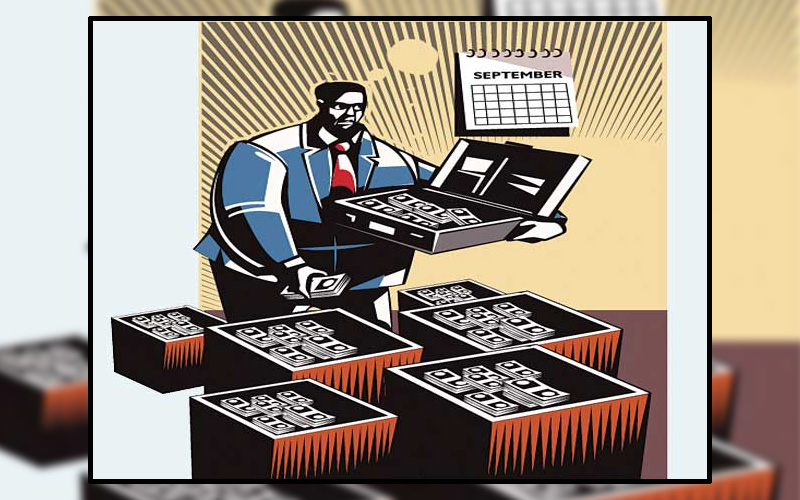HW Community
Indian Economic Slowdown: Path to Recovery May go Through Dusty Rural India

Shimla-After the release of economic growth figures for the April-June quarter of FY20 by Central Statistics Office last week, at least we have a consensus on one sobering fact: Indian economy is in the doldrums, and we no longer are the fastest growing economy in the world.
A sizable slowdown has been reported across most segments-manufacturing, farm, mining, construction, real estate, financial, professional services IT, auto, etc. The data on display is alarming considering the huge bearing these sectors have on employment. The slowdown of such enormous scale is likely to increase India’s unemployment rate in the coming months that stood at 6.1% in FY18- the highest in the last 45 years. For some time now, there has been a manifest lack of demand and investment sentiments in the market.
In the thick of all this, disconcerting is the lowest consumption growth in the last 18 quarters – remember the consumption growth was the major driver behind the rapid growth story of the Indian economy and it accounts for significant 55-58% of the GDP.
One of the major reasons for the decline in consumption growth is the shrinking rural wages, which is the result of the unacknowledged farm crisis going across the country for a few years now. As per the World Bank collection of development indicators report, the rural population in India was 66.46% of the total population in 2017. The constant decline in rural wages resulted in a substantial decline in disposable income, hence, the demand too weakened. The constant decline in food prices bedevilled agriculture income and subsequently lowering the spending and hurting the rural demand. In economic, high inflation hurts the end consumers, similarly, low inflation impacts the producers. The lower inflation rate impacted the farm producers tormenting rural India badly.
The favorable demographic profile (65% of the population in India is below the age of 35) of India, initially, acted as a stimulus for attracting investments. As the younger population of a nation aspire their own house, car, yearly holiday, white goods, electronic gadgets, etc. But, as India’s much-touted growth story has failed to generate enough jobs, sagging the aspirational spirits of the youth. Thus, resulting in the slackening of demand, in return, this affected the confidence and sentiments of the investors in the Indian market.
It has a cascading impact in an economy, as an investor invests in anticipation of demand and keeping in view the market sentiments; at present both these factors are lacking in the India economy.
Another reason for the economic slowdown is the decline in the saving rate from 34.6% to 30% over five years in India; the worst dip is in the household savings-the biggest source of Investment and accounts for 61% of the total savings- dropping to 16.3% from 23.6% over the same period. The 18% & 28% GST slabs, that covers 43 % and 19% of the good and services respectively also took a toll on the disposable income, weakened the demand and eating up the savings among the great Indian middle-class.
The credit household debt has also increased manifold in last decade. This has reduced the purchasing power and reduced saving of the household in India.
The credit growth over the years has remained weak- in spite of successive rate cuts by the RBI- owing to the problem of NPA plaguing the banks. The recent liquidity woes in the Non-Banking Financial Companies (NBFC) – shadow banking – have also fuelled speculation, instability, and stress in the financial market. This mess in the financial sector has impacted the investments as reflected by the subdued CAPEX cycle also.
The gig economy (responsible for 96% of the employment in the country) is yet to recover from the double whammy of demonization and GST. A testimony to this is the high unemployment rate prevailing in India. Gig in India is too big to be ignored.
Besides this, weakening currency and decline in export only piled up the concerns in the economy, in spite of favorable crude oil prices and low inflation. The aftermaths of the trade war and global slowdown have also started to reflect on the Indian economy.
In India, the richest 10% owes 77.4% of the national wealth; the poorest 60% have 4.7% only. This represents the widening cleavage between the rich and the poor, the growing plutocracy is a concern for developing nations like India. As more and more wealth is concentrated in few hands, instability in the economy increases, making the macroeconomic parameters vulnerable. For such economies with rising plutocracy, a gloomy economic prognosis beacons.
The next few months will be critical for the Indian economy, as demand and investment sentiments need to be spiked up. The disposable income must be increased immediately by revamping at the multiple tax slabs under the present GST regime and replacing them with a simpler lower single tax slab. The technical issues with the input tax credit software should be addressed immediately. This will sort out the delay input credit and reduce its proceeding time too. We need a simpler GST rather than the labyrinth one.
A major part of Rs 1.76 lakh crores given by the RBI to the government can be used on the public expenditure, this will revive the infrastructure projects and boost disposable income and revive demand. This will also bolster the credit demand which has been facing a massive downturn.
For decades now, the Indian growth story was riding on factors like a demographic dividend, a huge market for consumption and a strong base of saving to stimulate investment. But, the time has proved that such a model can’t work for long only on these factors. All these factors are favorable for economic development but, it has to be buttressed with policies that produce high enough economic growth with sufficient jobs; cultivate a conducive investment climate and boost confidence in the system. At present, there is a perceptible lack of these elements.
In developing nations, an economic model driven by consumption growth can’t work for long, rather economic model should be driven by continuous investment.
In India, unfortunately, all the limelight is hogged by urban India, whereas rural India remains unnoticed. Few quarters of stress in the auto industry becomes front-page news; on the contrary years of farm stress does not get any mention. Although, the path to the economic recovery may go through dusty rural India and foster on the sweat, toil and hard work of the prosaic gig economy. Albeit, it may not make a beaming headline. Rural India, for one more time, will not mind; as it never did earlier.
HW Community
PIL Filed in HP High Court Re-Ignites Quest for Recognizing Pahari (Himachali) as Hill State’s Official Language

Shimla- November 10, 2021, Himachal Pradesh High Court on Monday passed an order concerning a public interest litigation (PIL) seeking to recognize Pahari (Himachali) as an official language of the state. The petition also sought effective steps on the part of the government to preserve and promote the Pahari language in the State as its culture and language give it a distinct identity.
The Public Interest Litigation was filed by Arsh Dhanotia with a prayer that the state be directed to declare Pahari (Himachali) as one of the official languages in the State of Himachal Pradesh in any script and also promote further research towards a long-term formal Pahari (Himachali) nuclear language structure and nuclear Tankri script.
Bhawani Pratap Singh Kutlahria, the advocate for the petitioner, argued in the court that the State Government be directed to promote Pahari (Himachali) and other local languages as the medium of instruction in primary and middle-level schools as per the New Education Policy, 2020. On behalf of the petitioner, he also prayed the court to direct the state government to include Pahari (Himachali) language as a separate category for the 2021 Census and simultaneously undertake an awareness campaign to create awareness amongst the masses, especially the youth of the State who speak Pahari (Himachali), to get it marked as their mother tongue in the upcoming Census.
A bench of Chief Justice Mohammad Rafiq and Justice Sabina while disposing off the PIL stated,
“The direction as has been prayed for, cannot be issued to the State Government until and unless it is established on record that the Pahari (Himachali) language has its own script and that a common Pahari dialect is spoken throughout the State of Himachal Pradesh. We, however, set the petitioner at liberty to approach the Department of Language Art & Culture to the Government of Himachal Pradesh with his demand for undertaking research to promote a common Pahari (Himachali) nuclear language structure and nuclear Tankri script. If the petitioner approaches the respondents-State through its Additional Chief Secretary (Language Art & Culture) to the Government of Himachal Pradesh) for the prayer made in the Civil Writ Public Interest Litigation, it would be for the said authority to consider the same in accordance with the law.”
Additionally, the petition had emphasised that Sanskrit, which is the second official language of the state, had only 936 speakers according to the 2011 census and Pahari (Himachali) dialect chain which is spoken by more than 40 lakh people was being neglected and has not been made an official language even after having so many speakers.
The petition also highlighted works of Former Chief Minister Late YS Parmar and Former Education Minister Late Narain Chand Parashar towards the promotion of the Pahari (Himachali) language.
What’s Pahari (Himachali) Language, How Many Districts It Covers
It is to be noted that according to the petitioner, Pahari (Himachali) is a combined term used for the Western Pahari dialect chain spoken in Himachal Pradesh and majorly includes Kangri, Mandeali, Chambeali, Kulvi, Mahasu Pahari and Sirmauri. According to him ever since the creation of Himachal Pradesh, there has been a demand for recognition of Pahari (Himachali) under the Eighth Schedule of the Indian Constitution and it is also officially listed with 37 more languages as a language which is in significant demand to be included in the scheduled languages category.
In his plea, he also stated that the Himachal Pradesh Vidhan Sabha in 1970 and 2010 have also passed resolutions concerning the promotion and development of Pahari (Himachali).
Environment
Himachal’s Snow Covered Area Has Decreased, Poses Big Threat to State Economy’s Lifelines: Report

Shimla-The area under snow cover in Himachal Pradesh has declined by 18.5% according to a recent report published by State Centre on Climate Change (SCCC) and Space Application Center (ISRO) Ahmedabad. The report revealed this decreasing trend for the five major river basins in the State.
As the report points out, the high altitude regions of Himachal Pradesh receive precipitation mainly in the form of snow during the winter season. One-third of the geographical area of the state is covered by a thick blanket of snow during the winter season. Rivers like Chenab, Beas, Parvati, Baspa, Spiti, Ravi, Sutlej and its tributaries flowing through Himachal are dependent on snowfall in winter. These rivers mainly feed into the Indus water system and a decline at this rate rings a death knell for water and also food security for millions of people from Himachal to Kashmir, the plains of Punjab, the food bowl of the country.
Using images and data received from satellites, the report states, that the winter precipitation was mapped in all the basins from October 2020 to May 2021 (a period of two years). The findings indicate that there has been an average decrease of 8.92 percent in Chenab basin, 18.54 percent in Beas basin, 23.16 percent in Ravi basin, 23.49 percent in Sutlej basin compared to last year. The ice covered area of Chenab basin was 7154.11 sq km in 2019-20, which has come down to 6515.91 sq km in 2020-21. Similarly, Beas basin was reduced from 2457.68 to 2002.03 square kilometer, Ravi basin from 2108.13 square kilometer to 1619.82 square kilometer and Sutlej from 11823.1 square kilometer to 9045 square kilometers. Overall, the snow covered area was reduced from 23542 square kilometer to 19183 square kilometer in the entire Himachal.
Sutlej Basin covers 45 per cent of the total geographical area of Himachal and it is the longest river of the state. It flows for around 320 kms here, passing through Lahaul and Spiti, Kinnaur, Shimla, Kullu, Mandi, Solan and Bilaspur districts, along its course. The above study shows that the maximum reduction in snow cover has occurred in the Sutlej basin. An area of 4359 square kilometers under snow cover has decreased for the whole state, of which more than half of the Sutlej Basin.
Just two years ago another study had indicated that more than half of glaciers in Sutlej Basin are set to vanish by 2050. Yet another study also showed that the Sutlej basin has the highest 562 number of glacial lakes. These lakes stand the risk of sudden outbursts, which then causes flash floods downstream as the valley has already experienced. So, while the crisis that is unfolding, be it deglaciation, lake formation or reduction in area under snow cover, it seems that the Sutlej river basin is more vulnerable to these changes.
Prakash Bhandari, an environmental researcher and activist and member of Himdhara Collective expressing his concern states that the situation in the Sutlej river basin is certainly indicative of a serious climate emergency and it is critical to look into the drivers of this both local and global.
“The Sutlej basin catchment is the largest and so the changes visible here are more significant. Many factors have worked together to create this crisis which should be studied closely. There is no doubt that global warming is contributing to these changes. But the local conditions also play a role in reducing or increasing its impact”, he says.
The upper reaches of the Sutlej Valley, especially areas like Kinnaur are geologically fragile, with sharp gradients and loose soil strata. Vegetation is in a very small area so the proneness to erosion. We have seen the catastrophic impacts of flashfloods and landslides over the last decade and a half, where crores worth of property has been damaged. This year saw a spate of landslides where lives were lost. “In such a sensitive and also strategically important area, changes in the landscape will have far reaching and irreversible impacts. More construction activities will lead to more deforestation, more erosion”.
Construction of dams has been rampant in the Sutlej valley, a phenomena that started post independence and continues today. If all of the planned dams are built the Sutlej will be cho-a-cloc with more then 150, large and small projects. At the bottom of the valley in Bilaspur is the Bhakra Dam, built almost 6 decades ago, which has a size of 168 sq km and a storage capacity of 9.340 cubic km. Is. This is followed by the Kol Dam which extends for 42 km up to Sunni, which has a total storage capacity of 90 million cubic metres. Nathpa Jhakri Project which is 27.394 kms. is long. When a dam is built, a huge amount of water is stored. The debris of many villages, trees etc. also gets absorbed inside the dam. When water is stagnant, it receives heat from the Sun to form mist in the surrounding area by evaporation and simultaneously generates methane gas. The experience of the lake formed by the Kol dam at Tattapani in Mandi district shows that the area is experiencing heavy haze which was not there earlier.
“In the 30s and 40s, Shikari Devi and Kamrunag used to have snow on the peaks for about 6 months, which now could barely stop for only 2 months. The air route distance of Shikari Devi and Kamrunag is only 26 to 30 kms from Tattapani lake. At the same time, their distance is not much from the cement factories of Darlaghat, Sundernagar”, the elders in the area say. “Today, fog is prevalent and this has also made the area warmer”.
Due to the warming of the weather due to the clouds formed from the mist, the snow has started melting quickly. Apart from this the local crop patterns are affected. Post the 1990s, the Sutlej became a site for run of the river hydroelectric projects using extensive underground tunneling. This involves massive use of explosives for blasting through the mountains. Of the 23,000 MW worth of projects to be constructed in Himachal more than 10,000, a third are from this valley alone. Kinnaur continues to be a hydel powerhouse with 10 run of the river projects in progress and 30 more to be set up including two mega projects of 1500 MW and 1000 MW each. This paints a scary picture.
Interactive Sutlej River-Basin Map indicate Hydropower Station location
It is not just the hydro-electric dams but unplanned tourism and other development activities like mining, cement plants, road expansion and mindless construction across the high Himalayan regions have also add to the shift in local weather patterns, land use changes and thus the ecological crisis. But the reason why we should put the limelight on hydropower is that this is being pushed as “Green Energy”, in the name of climate change mitigation. As opposed to other forms of generating power, hydropower projects are said to cause lesser carbon emissions, which is why there has been a global push to shift to renewable resources. But the climate emergency in the Himalayas has put a question mark on ‘water’ as a renewable resource.
The question then arises that with all this data indicating a steady decline in river discharge and snow cover have our planners and policy makers not considered what will happen to these projects? Will they be able to generate the power they propose to? The people of Himalaya have to wake up to this wastage of public resources. Scarce funds should be diverted to better planning for securing local livelihoods by protecting the forest ecosystems and water sources for the future.
Author: Gagandeep Singh-From Himdhara (Environment Research and Action Collective)
Feature Images: unsplash/@raimondklavins
HW Community
Himachal: Warnings of Delta Plus Virulence Fall on Deaf Ears, No Restriction on Visitors from Affected States

Shimla-Yesterday, the Centre government directed the state governments to take immediate measure in wake of the spread of more infectious Delta Plus variant. As the Delta Plus variant is posing a threat of the third wave, the states were told to take steps like preventing crowds, increase testing, more focus on surveillance, contact tracing and put boosting vaccine coverage on a priority basis. Following it, Himachal Pradesh Government might have announced an alert over Delta plus variant, but there wasn’t any follow up on instructions passed by scientists and health experts to take strict restrictive measures ahead of the impending third wave.
To make it worse, high rank officials and political leaders were seen flouting Covid-19 SOPs on several occasion, which sent wrong messages to the masses. The pictures and videos showing flouting of Covid appropriate behavior by Chief Minister Jairam Thakur and Directorial General of Police, Sanjay Kundu, alongwith other staff for Anupam Kher is the most recent to mention. A group photograph and video of the same were widely circulated on social media and invited huge criticism from the people.
So far, the state has not reported any case of the Delta Plus variant. But the neighboring states – Punjab, Haryana, and Jammu & Kashmir – reported their first cases yesterday. This puts the boarding areas, like in Una district, at a higher risk. Chief Secretary to HP Government, Anil Khachi, yesterday said samples have been sent for genome sequencing.
Despite repeated warnings of Delta plus variant (B.1.617.2.1.), Himachal Pradesh has thrown its borders open to all and lifted all restrictions for inter-state travel in just one go. From June 23 onwards, the state government removed the condition for registering on the e-pass portal for visitors intending to enter the state. In the Cabinet meeting held on June 22, 201, the government first decided that e-pass restrictions would be removed from July 1, but later it changed the decision and instead implemented it immediately.
This haphazard decision is said to have come under huge pressure from the hospitality industry – the worst-hit sector, leading to financial crisis and mass unemployment among its stakeholders. Related associations had been approaching Chief Minister Jairam Thakur with their pleas to provide relief, but mostly faced disappointment. The stakeholders say the state government didn’t provide any significant relief, which is making the survival of the industry difficult.
Also Read: Read Eight Reliefs That Himachal’s Devastated Tourism Industry Seeks from HP Govt
Also, stakeholder of the industry, especially hoteliers, had been demanding the removal of restrictions and conditions on the entry of tourists to Himachal so that they could fetch the remaining peak tourist season.
With its inability to offer relief, the HP Government took the chance to waive off restrictions in a haste.
At the same time, the state government has decided to conduct offline examinations for the undergraduate classes starting from July. A section of the students had been condemning the HP government for scheduling exams without vaccinating students. Some student bodies had been asking the government as to why online classes were possible but not online exams.
The state government also waived off restrictions on timings for the opening of markets/shops.
As scientists and health experts warn of the virulence of the new variant and with neighboring states already on alert after reporting cases of the new variant, the HP government hasn’t even mentioned any intention to at least put a check on the visitor from the states where cases of Delta Plus are being reported. Carrying an RT-PCR negative report for visitors from such states/cities would have been a wiser step.
Officially, the state is on alert, but no measures have been announced to check the entry and spread of the variant into the state. The state government does speak of preparing for the anticipated third wave, but there is hardly any long-term preventive strategy. The Covid appropriate behavior is hard to adopt when markets and tourist places are crowded with visitors.
Why Delta Plus is a Big Concern
The World Health Organization (WHO) has labelled the Delta variant as ‘Variant of Concern’.
The Centre and scientific/medical institutes in India also agree with that Delta Plus as a variant of concern and could be the cause of impending third wave. Last Tuesday, based on the findings of INSACOG, the Union Health Ministry had alerted and advised Maharashtra, Kerala and Madhya Pradesh regarding the Delta Plus variant of COVID19.
INSACOG had warned that the Delta Plus variant has increased transmissibility, stronger binding to receptors of lung cells, potential reduction in monoclonal antibody response.
“Delta variant is more resistant to medication, treatment and vaccination. Therefore, people who have been vaccinated can still be affected by this variant and can go on to get a clinical illness, Archana Dhawan Bajaj, director, Nurture IVF, told a national English Daily.
“Neutralising antibodies against this variant post-vaccination seem to be nearly five times lower in people who have already been vaccinated than the other variants,” she said.
Further, Dr Raman Gangakhedkar, ex-Head Scientist of Epidemiology and communicable diseases, ICMR, has also expressed concern over the reports that Delta Plus has reported pathophysiologic change and affecting different organs. Dr Raman says that it could transfer from cell to cell and would more likely produce neurological symptoms as a common manifestation.
So far India has reported 51 cases of the Delta Plus variant.
Delta Plus variant is a variant of Delta with an additional mutation -B.1.617.2.1.














 Home Decor Ideas 2020
Home Decor Ideas 2020
